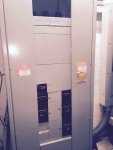This is kind of what I was getting at in my last comment- great article here.
"Interpretations" kind of make me leery when dealing with fatal voltages and potential fires.
---
Since PV is still very much an emerging technology, this is an important distinction to make. For example, say a representative from a Spanish company tells me it has a 50 MW portfolio of PV projects. This may mean only that the company participated for 1 year in the Spanish PV market explosion, which was a better example of what not to do than a shining moment in the history of PV. My intent here is not to pick on the Europeans, but rather to stress that experience is relative and contextual. Experience in Germany, therefore, does not necessarily correlate directly with experience in US markets. Given that irradiance and temperature is so much lower in Germany than in California, for example, a problem may take twice as long to surface in Germany. A German company with hundreds of megawatts installed and 10 years of experience might have the equivalent of only 5 years of experience in California.
Nevertheless, the sheer magnitude of installed PV capacity in Germany represents a significant body of learning. Why is it that PV fires are not a problem in Germany, the world’s largest PV market? One reason is that the Germans generally have better wire management practices. More importantly, however, they do ground-fault detection very differently— and better.
GFP methods. The proper usages of expansion joints and segmenting disconnects are important lessons learned from the Bakersfield Fire, as are the importance of conductor-temperature calculations and improved wire management methods. However, the primary message to the codes and standards community is that we need to change the way we design and test our GFP circuits.
http://solarprofessional.com/articl...ield-fire-a-lesson-in-ground-fault-protection


